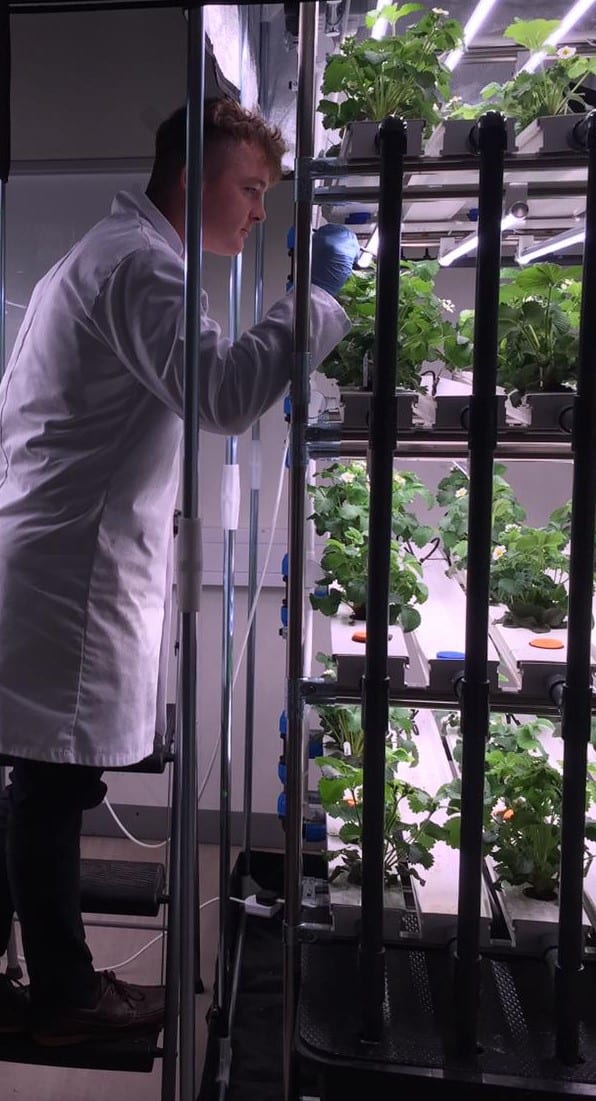
...of vertical farming
Vertical farming is a method of growing crops in stacked or vertical layers, leading to a higher yield for a given footprint i.e. it enables farms to produce more food compared to traditional farming methods. That’s just one of the benefits, writes Nina Turbanova, Senior Research Scientist at Digital Farming.
1 Controlled environment
Vertical farming is a form of Controlled Environment Agriculture (CEA), a technology-based approach that enables growers to adjust temperature, lighting, irrigation and fertilisers to maximise the health of the crops grown. This ability to control the growing environment makes it possible to produce highly nutritious crops with consistent quality all-year round, anywhere in the world. Production isn’t affected by climate, daylight hours or any other external factors. By adjusting some of the environmental factors, for example lighting, the plants’ nutritional content can be increased and other traits such as colour and taste can be manipulated to make them more attractive to consumers.
2 Pesticide-free
One of the biggest benefits of the CEA approach is the ability to minimise and control pests and diseases. The total control over the environment and the ability to select what is entering the system mean it is possible to eliminate the need to use pesticides. Insecticides and fungicides have a negative public perception and can contaminate water and soil. The excessive use of pesticides may also lead to decreased biodiversity. Vertical farming enables us to produce healthy and safe food in an environmentally friendly way.
3 Sustainability
Vertical farming goes hand in hand with hydroponics, a method of growing plants without soil. This means it does not contribute to the soil degradation caused by other intensive farming practices, it also avoids the soil and water pollution that can occur as a result of nitrate and phosphate leaching and run-off from fertilisers. It also means that land unsuitable for conventional farming can be used to grow crops. Additionally, significant water savings of up to 95% (compared to traditional intensive farming) can be achieved thanks to hydroponics. Reducing the amount of land required to grow some crops enables us to preserve natural resources while still producing sufficient food to meet the demands of the growing global population.
4 Carbon footprint
Consumers are increasingly concerned about the carbon footprint of the food they buy and this is having an impact on their purchasing decisions. Vertical and urban farming allows food to be produced locally, cutting the distance it has to travel from the land to your plate, known as food miles. Urban farming is beginning to gain momentum. The transformation of unoccupied buildings into growth rooms, using the existing infrastructure to house vertical farms, means it is increasingly becoming a commercially viable way of producing food.
5 Automation
Labour shortage is a growing issue in agriculture in many parts of the world. Vertical farms are seen as one answer to this, as the automation of certain tasks such as feeding and irrigation can reduce the number of people required to grow food. Perhaps for this reason, vertical farming entrepreneurs tend to be younger, on average, than traditional farmers. The pursuit of process optimisation, lower food production costs and increased food quality, calls for a deeper understanding of plant requirements. This in turn accelerates technical advancement and streamlines the production methods employed in vertical farming, enabling further innovation and development. Overall, these are exciting times and we can’t wait to see what vertical farming will bring in the near future.
CHAP’s CEA solution has a range of capabilities, all working to expand the boundaries of what can be grown in controlled environments, with a focus on commercial viability. For more information, go to Advanced Glasshouse, IHCEA, NLG Centre, and Vertical Farming Development Centre. Or email us at enquiries@chap-solutions.co.uk
Digital Farming is a digitally connected agri-tech food business formed in April 2018, with a specific focus on delivering nutritious foods and high quality pharmaceuticals to the Welsh population. It has been instrumental in the setting up of Controlled Environment Agriculture (CEA), Special Interest Groups in the Nutri-Wales cluster for Welsh Food Production and aims to establish a strong Welsh business and drive collaborative research activity in Wales. For more information go to Digital Farming










